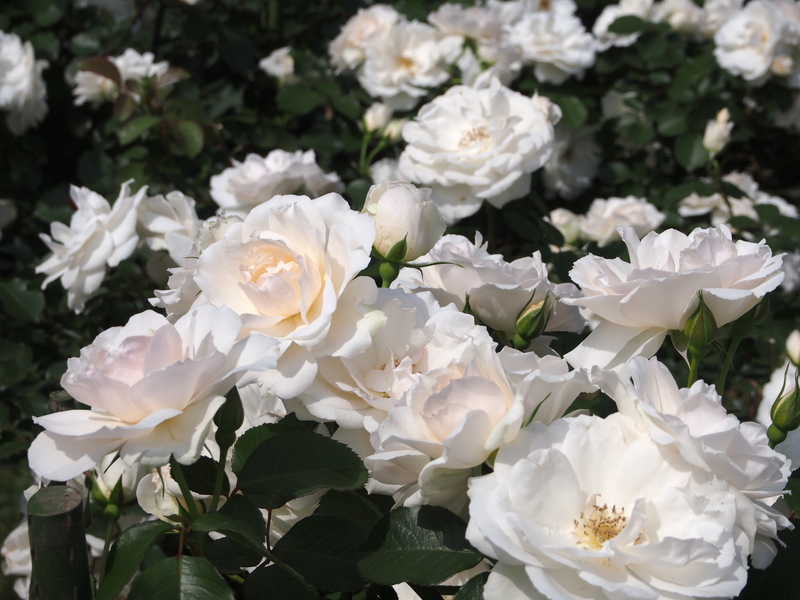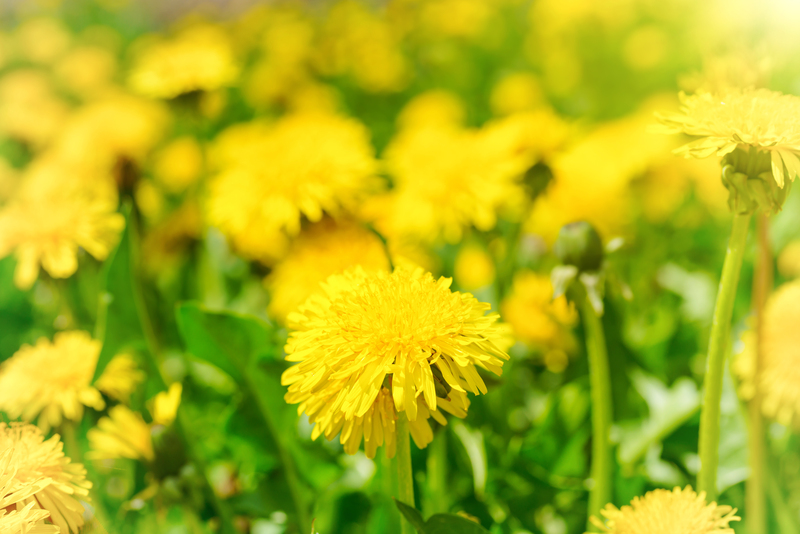Crafting a Serene and Flourishing Herb Garden
Posted on 28/05/2025
Crafting a Serene and Flourishing Herb Garden: A Complete Guide for Garden Lovers
Imagine stepping out your door into a space bursting with life, color, fragrance, and tranquility. That's the essence of crafting a serene and flourishing herb garden. Whether you are a seasoned gardener or a beginner eager to get your hands dirty, cultivating your own haven of herbs is both rewarding and transformative. This comprehensive article will walk you through every facet of designing, planting, and nurturing your own lush and peaceful herb retreat.
Why Build a Beautiful Herb Garden?
An herb garden provides far more than fresh flavorful ingredients for your kitchen. It offers you a sensory experience, attracts beneficial pollinators, and delivers genuine moments of relaxation and mindfulness. Here are some compelling reasons to start crafting your flourishing herbal sanctuary:
- Therapeutic benefits: Spending time among fragrant herbs reduces stress and promotes mental well-being.
- Culinary rewards: Fresh herbs like basil, rosemary, thyme, and mint elevate your dishes to gourmet level.
- Eco-friendly: Homegrown herbs require fewer resources and eliminate the need for plastic packaging.
- Wildlife sanctuary: Herbs attract bees, butterflies, and other beneficial pollinators to your garden.
- Personal satisfaction: Watching your serene herb garden thrive offers a tangible sense of achievement.

Planning Your Serene and Flourishing Herb Garden
Choose the Optimal Location
Crafting a serene and flourishing herb garden starts with choosing the perfect spot.
- Sunlight: Most culinary herbs need at least 6 hours of direct sunlight daily.
- Soil Drainage: Herbs thrive in well-draining soil. Avoid areas with waterlogging issues.
- Accessibility: Plant herbs close to your kitchen or a patio for convenience and frequent use.
- Shelter: While most herbs love sun, some like parsley and cilantro may benefit from midday shade in hotter climates.
Herb Garden Layouts: Inspiration for a Tranquil Space
There are numerous ways to lay out your flourishing herb garden, depending on your space and needs. Here are popular options:
- Traditional beds: Create rectangular or square beds for a classic look and easy maintenance.
- Raised planters: Great for small spaces or poor soil; they offer improved drainage and accessibility.
- Herb spirals: These striking, vertical gardens maximize space and create microclimates for different herbs.
- Container gardens: Ideal for patios, balconies, or renters. Use pots, troughs, and repurposed containers.
- Mixed borders: Integrate herbs with flowers and ornamental plants for a lush, diverse garden.
Selecting Herbs for a Harmonious Garden
Picking the right herbs is key to achieving both serenity and abundance in your outdoor space. Below are classic and creative choices to incorporate into your herbal haven:
Culinary Classics
- Basil: The summer staple, essential for pesto and salads.
- Thyme: Perennial and easy to grow, loved for its subtle aroma.
- Rosemary: Woody and fragrant - ideal for borders and flavoring roasts.
- Parsley: A versatile garnish and nutritious powerhouse.
- Cilantro: Perfect for salsas and Asian dishes, grows quickly in spring and fall.
- Sage: Adds depth to poultry and pasta, attractive silvery foliage.
- Chives: Mild onion flavor; beautiful purple blooms that attract pollinators.
Fragrant and Medicinal Herbs
- Lavender: Renowned for its calming fragrance and pollinator appeal.
- Mint: Vigorous and refreshing, ideal for teas and cocktails (keep contained to prevent spreading).
- Lemon balm: Uplifting citrus scent, used for herbal teas and relaxation.
- Chamomile: Cheery flowers and gentle, calming qualities for soothing teas.
- Calendula: Bright orange blooms; petals are edible and soothing to the skin.
Unusual and Decorative Herbs
- Purple basil: Adds striking color alongside classic green herbs.
- Bronze fennel: Feathery foliage and dramatic seed heads.
- Anise hyssop: Delightful anise flavor; attractive to bees and butterflies.
Creating Structure and Harmony in Your Garden
Design Principles for a Peaceful Herb Retreat
Achieving a serene and flourishing herb garden is about more than just the plants--it's how you bring them together to create a sense of peace, flow, and abundance.
- Layering: Place taller herbs like rosemary and sage at the back or in the center, with trailing herbs such as thyme and oregano at the edges.
- Symmetry: Formal gardens use symmetrical patterns for balance and order, while informal layouts evoke a more relaxed atmosphere.
- Pathways: Gravel, stepping stones, or bark paths invite quiet strolls and make maintenance a breeze.
- Seating: Add benches, Adirondack chairs, or simple stools to create places for relaxation and herbal contemplation.
- Focal points: A birdbath, sundial, or ceramic pot can serve as a visual anchor amidst the greenery.
Planting and Caring for a Flourishing Herb Garden
Soil Preparation and Amendments
Cultivating herbs starts with the soil. Most herbs prefer a loose, free-draining mix. Here's how to prepare:
- Test your soil: Herbs thrive in slightly alkaline to neutral pH (6.5 - 7.5).
- Add organic matter: Mix in compost or well-rotted manure to improve soil fertility and structure.
- Improve drainage: If your soil is heavy or clay-rich, add coarse sand or horticultural grit.
- Avoid high synthetic fertilizers: Overfeeding can cause excessive leaf growth and dull flavors.
Planting Techniques
Whether sowing seeds or transplanting young plants, careful planting helps create a robust and lively herb garden.
- Sowing seeds: Start small seeds like basil and parsley indoors in early spring; transplant after frost.
- Direct planting: Hardy herbs like chives and thyme can be sown directly into prepared beds in early spring or fall.
- Spacing: Follow recommended spacing--crowded herbs can suffer from poor airflow and diseases.
- Watering: Water new plantings gently and regularly, keeping the soil evenly moist but not soggy.
Mainenance for Vibrant Growth
Key tasks to nurture a serene and flourishing herb garden:
- Regular harvesting: Pinch and harvest leaves frequently to promote new growth and bushy plants.
- Weeding: Stay ahead of weeds which compete with your herbs for nutrients and water.
- Mulching: Use straw or bark mulch to conserve moisture and suppress weeds in garden beds.
- Watering: Most herbs prefer moderate moisture--overwatering is a common mistake, especially in pots.
- Pest management: Herbs are naturally pest resistant, but handpick pests or use organic controls when necessary.
Enhancing Serenity: Decorative and Mindful Touches
Inviting Tranquility Into Your Garden
For a truly serene herb garden, combine greenery with decorative elements and sensory experiences:
- Water features: The gentle sound of a fountain or birdbath amplifies calm.
- Wind chimes: Soft melodies foster a tranquil atmosphere.
- Stone accents: Arrange stones or small sculptures for structure and grounding energy.
- Herbal borders: Edge beds with lavender, creeping thyme, or chives for visual unity and easy access.
Sustainable Practices for Long-term Flourishing
Eco-friendly gardening helps your herbs, the earth, and local wildlife thrive.
- Composting: Recycle garden waste into valuable organic matter for future seasons.
- Rainwater harvesting: Collect water in barrels to irrigate during dry spells.
- Integrated pest management: Control pests naturally with companion planting, handpicking, and minimal chemicals.
- Pollinator-friendly practices: Include flower-rich herbs like borage, calendula, and lavender to support bees and butterflies.
Enjoying and Using Your Herb Garden Harvest
Culinary Creations
Nothing beats the flavor of freshly picked herbs! Snip bunches to:
- Garnish salads, soups, and entrees for added color and aroma.
- Infuse oils, vinegars, and butters with herbal zest.
- Brew herbal teas for relaxation and wellness.
- Preserve bounty by air-drying or freezing excess herbs for year-round use.
Wellness and Beauty Uses
Create spa-like rituals with your herbal harvest:
- Lavender sachets for calming sleep and sweet-scented drawers.
- Chamomile baths to soothe skin and spirit.
- Mint-infused water for a refreshing drink any time.
Troubleshooting Common Herb Garden Challenges
Even the most flourishing herb gardens face obstacles from time to time. Stay alert for:
- Bolting: Herbs like cilantro and basil may flower and go to seed quickly in hot weather. Harvest regularly and provide partial shade.
- Leggy plants: Insufficient light or overcrowding causes weak stems. Trim back and provide adequate sunlight and space.
- Root rot: Overwatering is the primary culprit. Ensure pots and beds drain well.
- Pest outbreaks: Use neem oil, soap sprays, or introduce beneficial insects instead of harsh chemicals.

Herb Garden Inspiration: Small Spaces to Sprawling Retreats
You don't need acres of land to cultivate a serene and flourishing herb garden; even a sunny windowsill or balcony can become an herbal oasis. Here are ideas for all spaces:
- Container herb garden: Use colorful pots, vertical wall planters, or hanging baskets for tiny urban areas.
- Windowsill delights: Line kitchen windows with petite pots of basil, chives, and parsley for easy access.
- Backyard symphony: Combine herbs, flowers, and stone paths for immersive calm and beauty.
- Community plots: Join a shared allotment or community garden and inspire neighbors with your thriving herbal beds.
Conclusion: Nurture Peace, Purpose, and Plenty With Your Herb Garden
Crafting a serene and flourishing herb garden is a fulfilling journey that nurtures both body and soul.
By choosing diverse herbs, designing with intention, embracing sustainable practices, and regularly enjoying your harvest, you create a sanctuary with boundless rewards. Whether you dream of a simple windowsill arrangement or a lush backyard retreat, the timeless pleasure of cultivating herbs is within reach for everyone.
Start planning your tranquil, flourishing herb garden today, and let nature's bounty transform your life, one sprig at a time.

